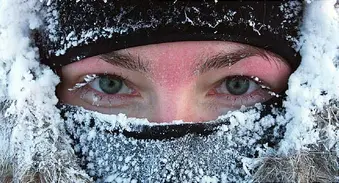Quiz: Test Your Frostbite IQ


Question 1/16
What part of your body is more likely to get frostbite?
- Stomach
- Toes
- Thighs
- All of the above
Question 2/16
You have to be exposed to freezing temperatures for an hour to get frostbite.
- True
- False
Question 3/16
To rewarm an area of the body that's frostbitten, you should use:
- Hot water
- Warm water
- Cool water
- Cold water
Question 4/16
If you think you have frostbite, you should:
- Rub the affected area
- Warm the affected area next to a fire or source of dry heat
- Get into a warm room
- All of the above
Question 5/16
What can help prevent frostbite?
- Hot coffee
- Exercise
- Petroleum jelly
- All of the above
Question 6/16
How should you dress to avoid frostbite?
- Tight-fitting layers of cotton
- Loose-fitting layers of cotton
- Tight-fitting layers of wool
- Loose-fitting layers of wool
Question 7/16
It's OK to run you car engine to stay warm if you are stranded in the winter.
- True
- False
Question 8/16
Frostbite causes ice crystals inside the body.
- True
- False
Question 9/16
If your fingers get frostbitten, they'll have to be amputated.
- True
- False
Question 10/16
Frostbite is a type of hypothermia.
- True
- False
Question 11/16
What can increase your risk of frostbite?
- Smoking
- Alcohol
- Heart disease
- All of the above
Question 12/16
Earrings or other metal jewelry can increase your risk of frostbite.
- True
- False
Question 13/16
You shouldn't rewarm a frostbitten area if:
- You're a long way from safety
- There's a chance it could refreeze
- Your source of heat is limited
- All of the above
Question 14/16
Children are more likely than adults to get frostbite.
- True
- False
Question 15/16
Dogs and cats can't get frostbite.
- True
- False
Question 16/16
Chilblains are the same as frostbite.
- True
- False
